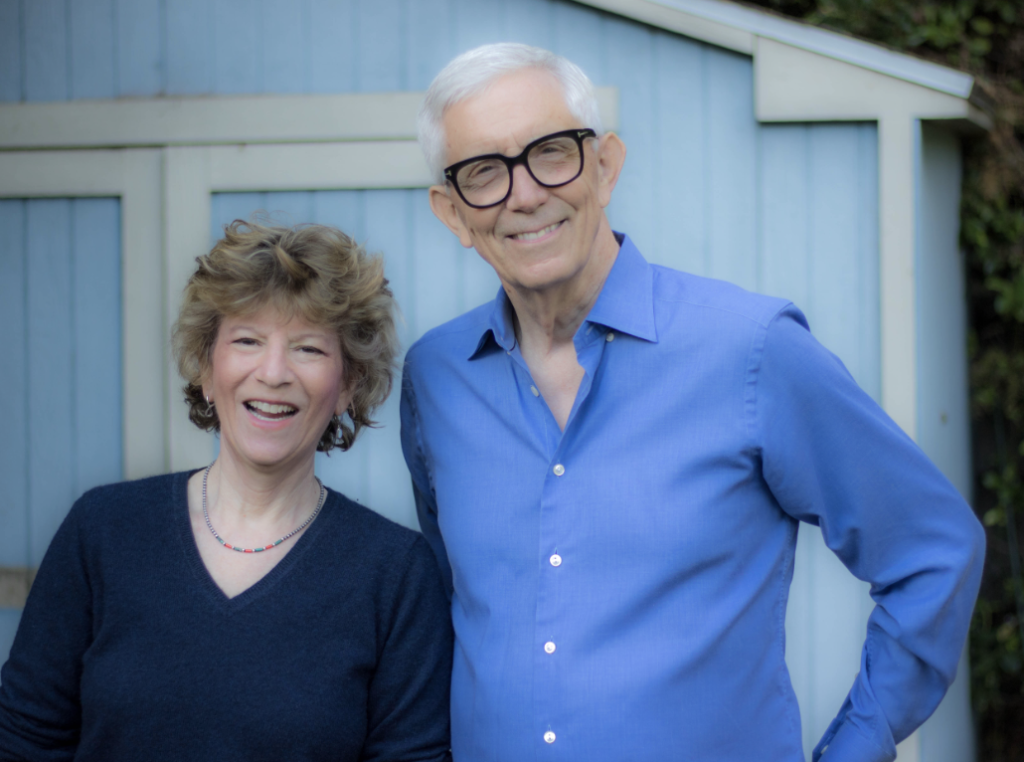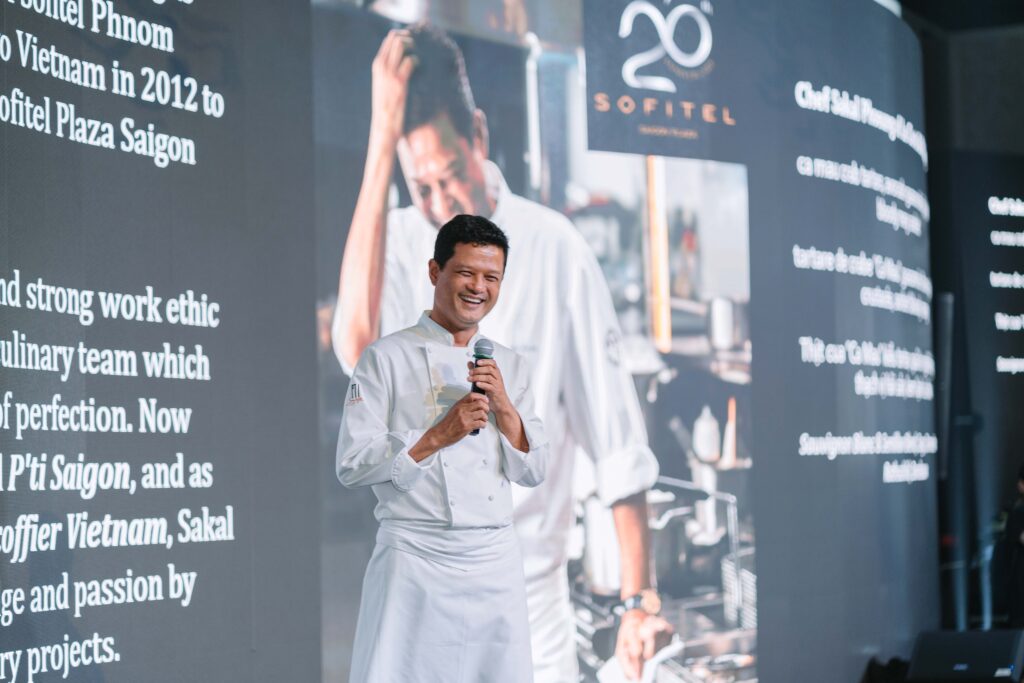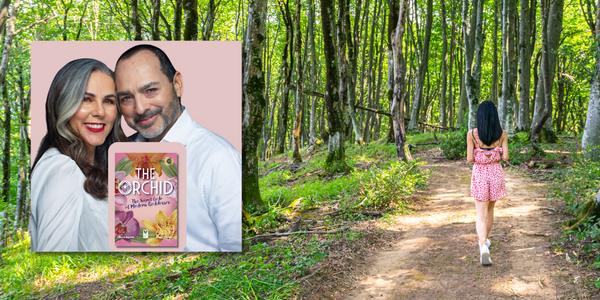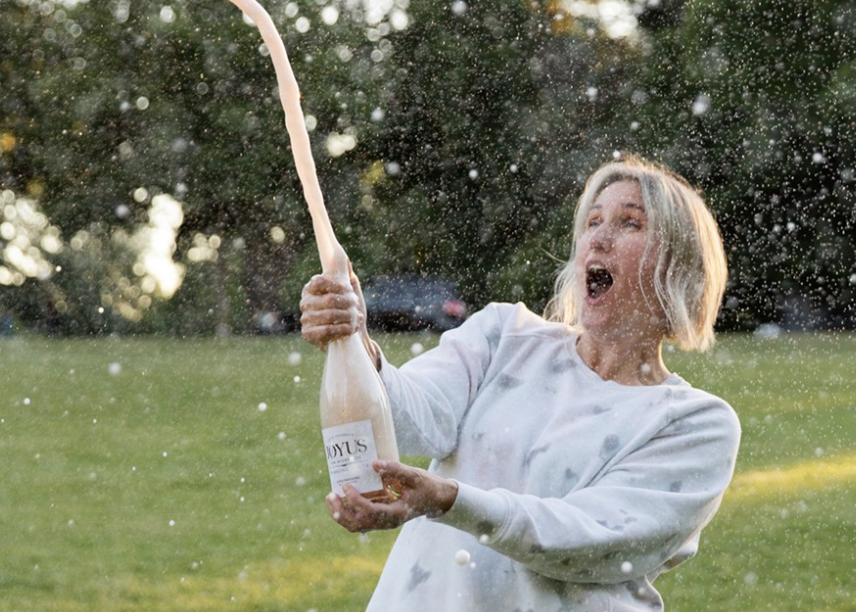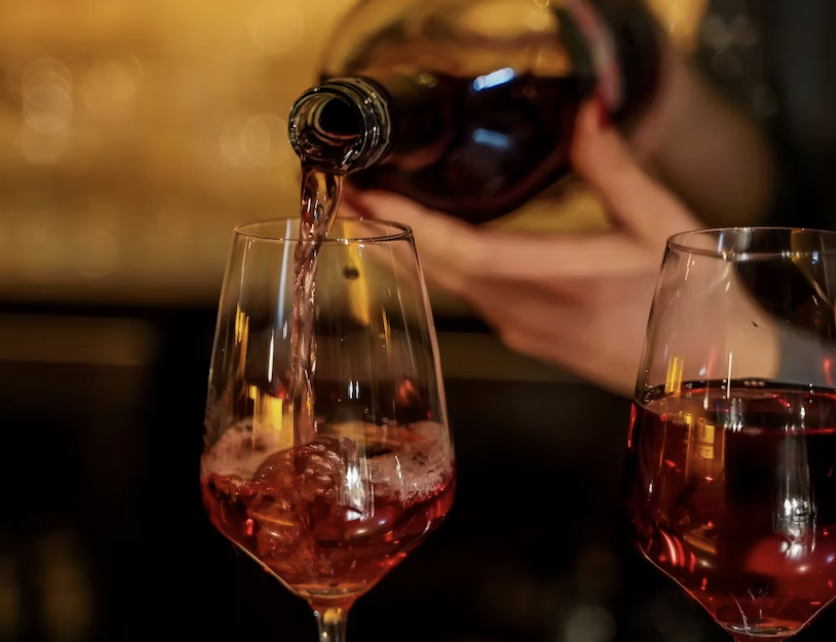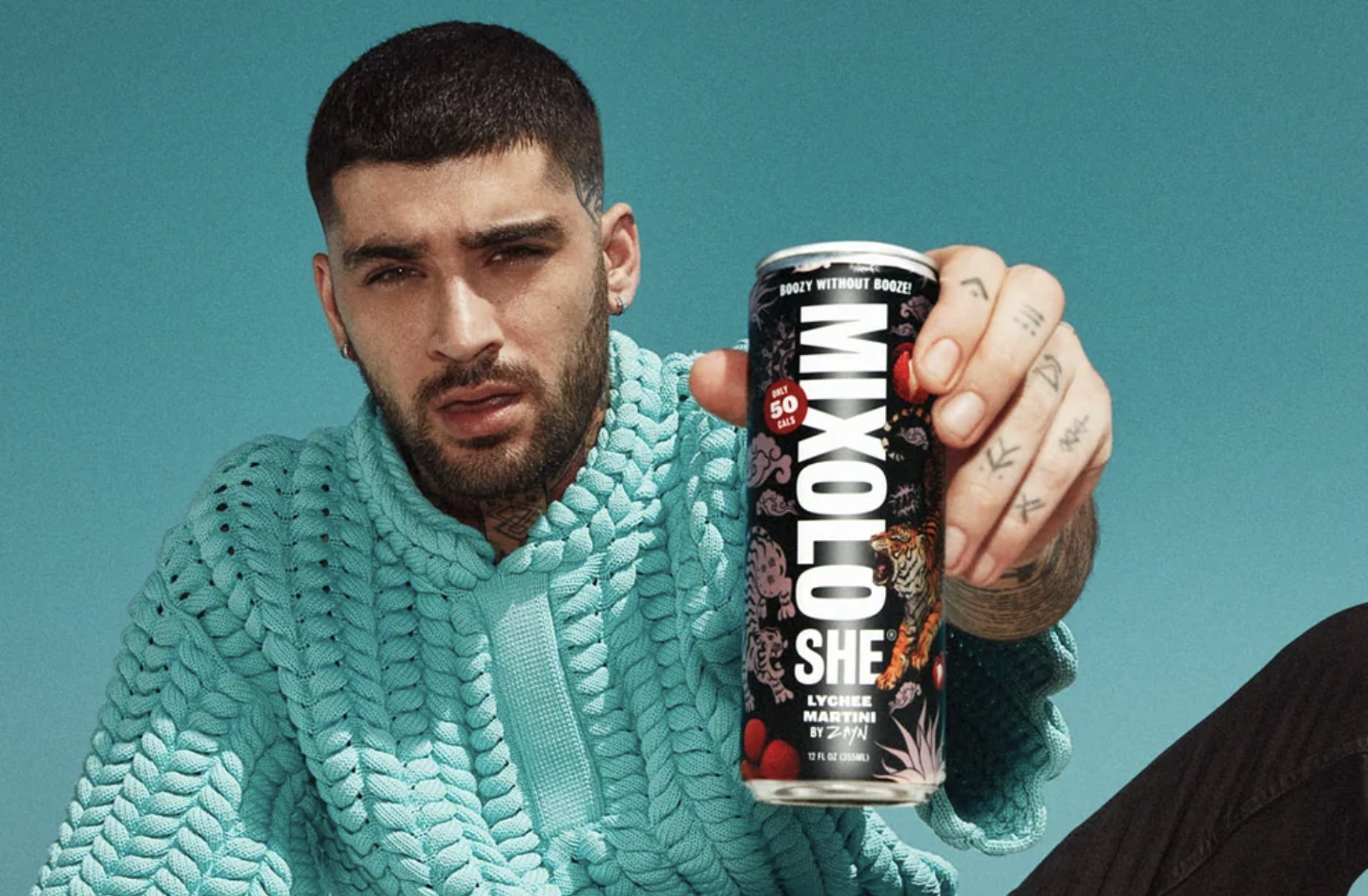Oryx Desert salt brings Taste, Health and Social Good to Your Gourmet Experience
Oryx Desert Salt Taste
In the crowded world of salts and condiments, Oryx Desert Salt is working hard to separate itself from the crowd and more and more people are noticing.
Come have a taste and a closer look….
Oryx Desert Salt has a heightened taste, even when compared to other gourmet options. Subtle, yet bold. It adds a zest to the bite while being gentle on your palate. A finishing salt who’s magic is pulling out an extra bit of dimension from most dishes.
I tried it on poultry, rib eye and salmon. Bringing out the juice and flavor. Each time the taste was noticeably enhanced.
With its distinctive flavor profile using less salt will achieve that enhanced flavor and Oryx is still going, creating more exclusive flavored salts for exciting new taste experiences

So far I’ve only sampled their white salt, but judging by that experience, I’d LOOOVE to try their variety.
“Salt is the smallest ingredient in any meal yet it has the biggest impact”
Oryx Desert Salt’s Flavors
SMOKED SALT – cold smoked over French Oak shavings
WINE SALT – soaked in Shiraz red wine and sundried
BRAAI/ BBQ SALT – free from additives, flavourants, preservatives, wheat or gluten fillers.
Oryx Desert Salt’s Health Benefits
Oryx Desert Salt has all the essential minerals and trace elements that exist naturally in salt, including magnesium, zinc and potassium.
It’s 100% pure, crystal-white, natural desert salt. Sun-dried, unrefined, no additives, no anti-clumping agents, no preservatives. Dried by the hot African desert sun.

Why is this important? To really understand, let’s put on our science lab coats and get into the specifics.
There are two elements of salt – sodium and chloride – and they each play vital roles to your healthy body.
Sodium helps your nervous system, controls your taste, smell and touch, helps your muscles (and heart) work and helps your brain talk with the rest of your body.
Chloride is key for digestion and helps keep your blood moving.
Okay, science class is over.
But, yeah, that’s how important salt is to us. And how important Oryx Desert Salt recognises their role.
Some of us, honestly, haven’t put that much thought into what kind of salt we’re using. And now we know we should.
The Oryx Desert Salt Story
Back in the Summer of 2020 inspiration struck CEO / Founder Samantha Skyring when she took a 7 day walk through South Africa’s Namib Desert.
During the journey, she had several up-close encounters with Oryx Gazella (large antelopes) and learned the Oryx go a lifetime without drinking water.
How do they survive it?
The salt plays a big part. The animals get the necessary minerals and trace elements vial by licking native salt.
If you look on Oryx Desert Salt’s packaging, you’ll notice the Oryx, with its striking coloring and presence, because became the symbolic icon for Oryx Desert Salt.
Oryx Desert Salt Cares About Our World
They support small, local businesses, build partnerships and advocate for eco-awareness.
Oryx Desert Salt believes in impact sourcing which is choosing to source locally where possible and supporting small, often women-owned businesses.
They also work to build collaborative relationships (from their chefs, cooking schools and beyond) seeing them as valued ambassadors.
Their cotton bags, aprons and shopper bags are manufactured by a women’s home industry community group.
They partner with organizations like the Ukama Foundation, Macassar Pottery, Khomani San and Mier communities who own !Xaus Lodge in the Kgalagadi Transfrontier Park in the Kalahari Desert.
Where To Buy
Available at Whole Foods throughout the county, on Amazon and on their website here.
YOU MIGHT ALSO LIKE
Bubbly East Coast Prosecco Tasting! Discover with Wine Expert Alan Tardi Wed June 26th at New York Wine Studio
DC Heads to NYC for Prosecco! Taste and Discover with Wine Expert Alan Tardi Wed June 26th at New York Wine Studio
Prosecco has gone from a little known mountain fizz to a vinous superhero, overtaking Champagne (and every other sparkling wine out there) and enjoyed by wine drinkers throughout the world, as the base of a cocktail or an everyday quaff.
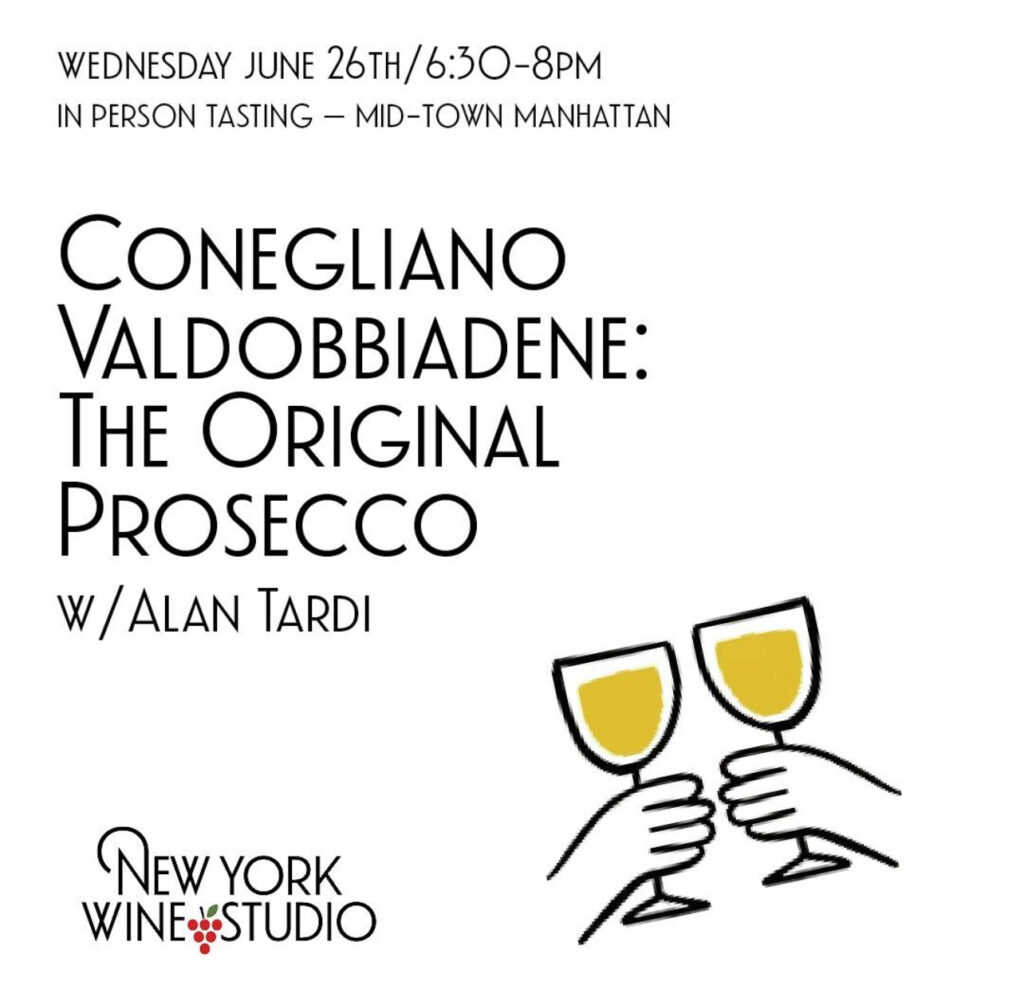
But despite its huge popularity, most people don’t know much about it.
And there is much more to Prosecco than many people are aware.
”My objective is to
clarify the critical differences
between the original ancient Conegliano Valdobbiadene Prosecco and
the DOC Prosecco that was enacted in 2010.”
Alan Tardi
New York Wine Studio
Prosecco is produced only in Italy, in the Northern regions of Veneto and Friuli, and there are three official Prosecco appellations.

Prosecco DOC
One of them, Prosecco DOC, was created in 2010. It occupies a huge, mostly flat area encompassing almost two entire regions and accounts for most of the 700+ million bottles of Prosecco produced each year.
Conegliano Valdobbiadene Prosecco DOCG
Conegliano Valdobbiadene Prosecco DOCG is a tiny area in the foothills of the Dolomites consisting of 15 small municipalities in the province of Treviso. This is the ancient winegrowing area where Prosecco was born and made a miraculous comeback in the aftermath of World War II.

New York Wine Studio’s Alan Tardi
Besides its pedigree, there are numerous factors of the Conegliano Valdobbiadene enclave that distinguish it from any other winegrowing area in the world: complex and diverse topography, variety of soils, native grape varieties, distinct sub-areas, ancient history, and varied typology—bubbly, fizzy, and still; secondary fermentation in tank or in bottle, leaving sediment in the bottle (known as Ancestral Method) or removing it (Traditional Method).

In this class—which takes place right in the middle of National Prosecco DOC week—we will discuss the origin and evolution of Prosecco in the Conegliano Valdobbiadene area. We will also examine the two additional Prosecco appellations created in 2010.
But most of the time will be devoted to exploring and tasting Conegliano Valdobbiadene Prosecco through a lineup of 8 exceptional terroir-driven wines, in a variety of styles, that demonstrate the unique characteristics, complexity, and diversity of the original Prosecco.
Participants will also learn how to say “CONEGLIANO VALDOBBIADENE” like an Italian!

Alan Tardi has arranged a fantastic lineup of unusual and exceptional wines (half of them are coming directly from Italy) which demonstrate the various factors that characterize the complexity and uniqueness of Conegliano Valdobbiadene: Different production methods (“Tranquillo” i.e. still, Martinotti, Classico/Traditional, Ancestral); frizzante, spumante; single vineyards, Rive, native grape varieties; diverse, soils, terroirs and topographies.
List of Wines
- Prosecco Tranquillo DOCG “Il Canto Antico” — BORTOLOMIOL*
- Colli Trevigiani IGT Verdiso Frizzante Sui Lieviti — GREGOLETTO
- Progetto 5 Varietà Conegliano Valdobbiadene DOCG Brut — MARCHIORI*
- Conegliano Prosecco Superiore DOCG Rive di Ogliano Extra-Brut — BIANCAVIGNA
- Superiore di Cartizze Brut DOCG — RUGGERI*
- Superiore di Cartizze DOCG “Private” Rifermentato in Bottiglia 2014 — BISOL
- Conegliano Valdobbiadene Prosecco Superiore DOCG Rive di Carpesica “S.C. 1931” Metodo Classico — BELLENDA*
- Valdobbiadene Prosecco Superiore DOCG Asciutto, Rive di Colbertarldo, Vigneto Giardino — ADAMI
- Torchiato di Fregona Colli di Conegliano DOCG “Ciàcoe” 2016 — CA’ DI RAJO*
*Shipped directly from the winery in Italy
Find more information and buy tickets at New York Wine Studio or at the link below.
https://www.newyorkwinestudio.com/original-prosecco
Bob Dylan’s Bourbon Feud: Heaven’s Door Kentucky vs Tennessee
Bob Dylan’s Bourbon Feud: Heaven’s Door Kentucky vs Tennessee
Heaven’s Door Spirits, Bob Dylan’s highly awarded collection of super-premium American whiskeys, is turning up the heat on the age-old debate of which state, Tennessee or Kentucky, makes the best bourbon.
For as long as corn’s been cracked and stills have bubbled, Kentucky and Tennessee have been turning pristine limestone water and grains into a coveted amber elixir.
Heaven’s Door’s Great State Bourbon Debate rekindles the friendly feud
Heaven’s Door’s Great State Bourbon Debate rekindles the friendly feud between these two bourbon powerhouses, inviting whiskey lovers everywhere to put their palates to the test and voice their opinion.
Heaven’s Door sets itself apart as the first brand to offer both a Kentucky and Tennessee bourbon, giving fans a unique chance to compare.
The brand’s Kentucky Straight Bourbon, Ascension, and Tennessee Straight Bourbon, Revival, are made from high rye mash bills with grains largely sourced local to the distillery, and barreled at the same proof, yet yield vastly different taste profiles. Heaven’s Door invites you to level set, savor and decide which bourbon pleases your palate and wins your heart.
A Tale of Two Bourbons
Many folks mistakenly believe that bourbon can only be made in Kentucky, but the truth is, bourbon can be crafted anywhere in the U.S.
What makes an American whiskey a true bourbon is a special set of rules: it has to be made with at least 51% corn, distilled at a certain proof, and aged in new oak barrels.
Kentucky and Tennessee both have storied histories of producing excellent bourbon, with differences in water and climate producing distinct flavors.
Kentucky’s limestone water and Tennessee’s pure spring water are both famous for helping yeast thrive during fermentation.v
Differences in flavor profile come from the type and provenance of the grains used, the type of yeast used, water quality, the proof at distillation and the particular wood used to make oak barrel.
Even the location of the barrel warehouse, the circulation of air between the barrels being stored and where the barrels are within the warehouse (high up or near the bottom) all conspire to give impart flavor differences.
Heaven’s Door Kentucky Straight Bourbon, Ascension
Heaven’s Door Kentucky Straight Bourbon, Ascension, is a unique blend of two premium Kentucky straight bourbons aged for over five years and non-chill filtered, boasts warm and slightly sweeter notes of vanilla and baking spices. The limestone-filtered water of Kentucky, renowned for its purity, plays a key role in developing these rich flavors.
Heaven’s Door Tennessee Straight Bourbon, Revival
Heaven’s Door Tennessee Straight Bourbon, Revival, also aged for over five years and non-chill filtered, offers a drier profile with complex and sharp flavors. Unlike many Tennessee bourbons, Revival skips the “Lincoln County Process” – a charcoal filtering step – allowing the natural flavors of the local non-GMO grains to shine through, resulting in a lingering finish with hints of caramel, cinnamon, and nutmeg.
“We wanted to fan the flames of this old debate
between Kentucky and Tennessee bourbon
and showcase
our outstanding expressions of both styles.
We’re excited to hear what consumers think and how they experience these two classic bourbons.”
Alex Moore
Master Blender and COO
Heaven’s Door Spirit
Heaven’s Door marries art and craft in every bottle, drawing inspiration from Bob Dylan’s restless spirit to continually innovate. By sourcing non-GMO grains and honoring each state’s natural elements, the distinct character of each bourbon is evident in every sip.
Yo DC! Following your Heart and Need Media Attention? Reach to Publicity For Good, CEO Heather Holmes explains
Yo DC! Following your Heart and Need Media Attention? Reach to Publicity For Good, CEO Heather Holmes explains
Publicity for Good is a millennial run communications firm that provides high-level disruptive, publicity and social media services for wide array of purpose driven clients in the food, beverage and beauty industry.
In 2016 by Heather Holmes former miss Ohio international celebrated publicist and Forbes 30 under 30 nominee publicity for good has built a reputation as the countries number one PR agency for CPG brands that have social causes built into their DNA.
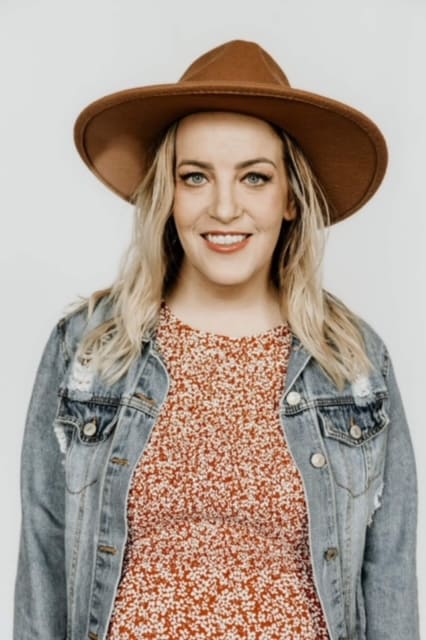
Publicity For Food CEO Heather Holmes
Today’s conversation with Heather Homes from PublicityForGood.com has been edited for length and clarity. For the full, un-edited conversation, visit our YouTube channel here.
Joe Winger:
Heather Holmes from PublicityForGood.com. I’m a big fan because you’ve helped us facilitate a lot of previous conversations about food and drink and nutrition and all the things we like talking about.
What’s the most important thing that you want to share with the audience today?
Heather Holmes:
I really want to take away the unknown or worry about getting in the media. I want to make it more accessible to amazing brands and people.
So I definitely want to share tactical advice that if someone is reading this, they have a good story in business, they have the confidence that their story is good enough and they could absolutely make an impact and grow their business by getting in the media.
Joe Winger:
Starting with the basics, let’s pretend I have a company, I think I want public attention. I want to reach out to someone like you.
So what should I be thinking about? What do I present to you as a step one?
Heather Holmes:
Step one is really the intentionality of why you want to get in the media. What’s your goal? Are you wanting to reach more people? Are you wanting to get your story out there?
Are you wanting more sales and more people to buy your product?
You really need to know. Where you’re going first, and if you don’t know where you’re going, or you don’t have a vision, then it’s really hard to help you.
But if you have clarity there, then we can really pull back and help you identify your story, how you’re different, your why, and why your product and or company, would be really great to be in the media.

The PublicityForGood Team
Joe Winger:
Now, looking at the grand scheme of the campaign, what kind of a campaign should we be looking for: expectations, results?
Heather Holmes:
After we know our outcome that we’re wanting to get more sales, more backlinks, or name in the media, then what I like to do first is work with every entrepreneur, and even if you have a product, to really reflect in “why your story matters”
Why does your product matter?
If you’ve never been in the media before, I take people for an exercise where I have them draw on a piece of paper, them as a baby, to where they are now.
I have them write the key pivotal moments that have happened in their life that have made them start that company, because those little components are absolutely a part of your story.
I’ve been in the media 700 plus times: Inside Edition, Fox News, The New York Coast, incredible media, but it hasn’t always been about being a publicist, right?
Yes. I’m the founder of Publicity For Good, but a lot of that has been my story or building a seven figure company from an airstream.
Now I have almost two under two with a third on the way.
So you need to have your key pivotal moments because those are things you can talk about in the media.
Then we need to look at what’s going on in the news and how we bridge the gap between your product. Relevancy.

Joe Winger:
People may not know you are a former Miss Ohio International. Can you tell us a lesson you learned from being a former Miss Ohio International that you’re using in today’s work?
Heather Holmes:
It’s really all about your platform and reaching new audiences.
When I was building my company I decided I wanted to get into pageants. I wanted to meet a community of like minded people that wanted to make a difference in the world.
It was a way for me to have a platform because at the time I was talking about why you absolutely can build a profitable business. But also make a difference in your community and make a difference amongst your team. And really just build an incredible legacy.
So that was why I did the pageants.
I did a bunch of publicity and again, it made me relevant and timely because that was what got me in the media because I was Miss Ohio and I was only Miss Ohio International for a period of time.
So it gave me that relevancy. So you have to be relevant.
You have to bridge the gap between what’s happening in the news, or we often use Awareness Days, National Nutrition Month, National Social Media Day, and you have to position your product or yourself as the solution.
[For example], we were talking about an incredible juice brand, but most pitches I see are very promotional, right? It needs to be how you or your product simplifies people’s lives. How are you adding value? Or you don’t have a product you need to inspire people.

Joe Winger:
You’re growing a 7- figure business. What’s it like growing a huge business while you’re taking care of your kids and for a while you were living out of your Airstream
Heather Holmes:
We lived out of a 23 foot airstream for 3 1/2 years. I went from dating to engaged, to married to [my first child] Rose, who’s almost two, who lived in our airstream with us.
The year the pandemic [hit] was our first million dollar year.
I think a lot of the reason why it was that year is because when March hit, everyone was so scared that we lost about 40% of our business, number one.
Number two, we had to hustle and grit to make it. There was no choice of failing. All the distractions were gone.
When you’re in an Airstream, all you have is your laptop, but we had no external distractions, and then everything else was closed.
So the only focus we could do was our business and we had to scale out of necessity because we didn’t want to lose what we had put so much time in.
Fast forward, we now have 22 acres where we live and we have two under two, we have one on the way, we’re a full time team of 40, and it’s not easy.
I say transparently, it’s a hot mess. There are so many miracles that happen every day, but life is one, right? I can’t turn off my founder hat and publicist hat and then “Oh, I’m a mom”. It’s all one.
So yes, I might have Rose [my daughter] on a call with me from time to time, but I’ve learned that the more you step in and embrace your life, who you are and the realness, sometimes people opt out and that’s okay.
And this is my legacy.
I like these missions that we’re doing good work to us is way more than a business. We want to grow your brand and mission and we take it so seriously.
So it’s not perfect. It’s not perfectly scheduled. I’m a full time mom, all the time on the weekends when the kids are sleeping, we’re working.
We know where we want to go, and these clients and ambitions that we’re aligned with and supporting are helping people with their health.
Joe Winger:
What an incredible story to share.
Heather Holmes: I have so much to share. Like I was adopted when I was a week old to having two under two and another one on the way and building a business and building a homestead.
It’s so crazy. Austin, who’s my husband, the first week we were dating, we’re all about intentionality. I have the journal and we mapped everything out.
This year, we were going to get engaged then married. Austin and I,l we will have been together almost five years.
We’ve had a kid every year. Rose will be two in June.
We want to build a business. We want to impact our clients, brands, and scale their business. We want our team to get better and flourish in their personal lives too.
This is our mission and I’ve seen so many miracles happen from getting in the media on a personal level.
I was talking to [a business owner client] and her business grew by 40% from getting in the media.
One of my favorite cookie brands, a mom had an incredible heart story. She went on our local news and she brought in $12,000 worth of sales, just the local people wanting to support her.
On the flip side, when people Google my name, it’s like my social currency, there’s all these articles. So I have so much peace in that. Our kids will see the good work we’re doing.
Joe Winger:
You’re talking to an audience of foodies. What is your favorite meal?
Heather Holmes:
We just had Indian food last night that my husband made and it was so good.
We used to live in San Diego and I think San Diego has the best food. It’s all fresh. We’ve traveled a lot. We’ve been to Bali, their food is pretty incredible too. Where we live [now] we’re right outside of Asheville and Charlotte. So they have some good restaurants, but like I’m not in the phase right now where I’m the foodie like I used to be.
[At our house] we have chickens and we have fresh eggs. So I’m obsessed with fresh eggs every morning. You’re living a good life when you can go get your eggs and have them at home with some goat cheese.
And honestly, I love Livermuth. Crazy. So I’d say some Livermuth fried in a cast iron with some eggs and goat cheese. It’s the simple things that I really do love.
Joe Winger:
Heather Holmes with Publicity for Good. As we wrap up, whether it’s a potential client, a potential vendor, someone wanting your help with publicity, what are the best ways to find, follow you, websites, social media, etc?
Heather Holmes:
You can go to PublicityForGood.com You can find me on social media as well.
https://www.linkedin.com/in/heatherdesantis
https://www.instagram.com/heatherdesantis
https://www.instagram.com/publicity.for.good
https://www.facebook.com/heatherdesantis
You Might also like
-
DC Discovers Bordeaux wines, leading the way with Julien Bonneau from Chateau Haut Grelot
Incredible Bordeaux wines from Chateau Haut Grelot leads the way with Julien Bonneau
Today Chateau Haut Grelot’s Julien Bonneau visited to talk Bordeaux winemaking, their legendary wine region, his family’s pioneering legacy, his favorite food and wine pairings.

Chateau Haut Grelot’s Julien Bonneau
Can you tell us a little bit about what inspires you about the wine business? Maybe a memory or wine celebration.
Julien: As you imagine in Bordeaux, or even in France, most of the wine business is a family business. It’s very father and a son or daughter. There’s always this kind of takeover.

Chateau Haut Grelot’s Bonneau Family
I grew up with my father and he was always into wine, tasting wine. ’Oh, you should smell the wine and making me discover the wine from when I was a very young child. And so I didn’t want to take over the company.
I didn’t wanna take over the story about the wine, but I had one weakness: I love wine actually. I like wine very much, so it was very hard to say no.
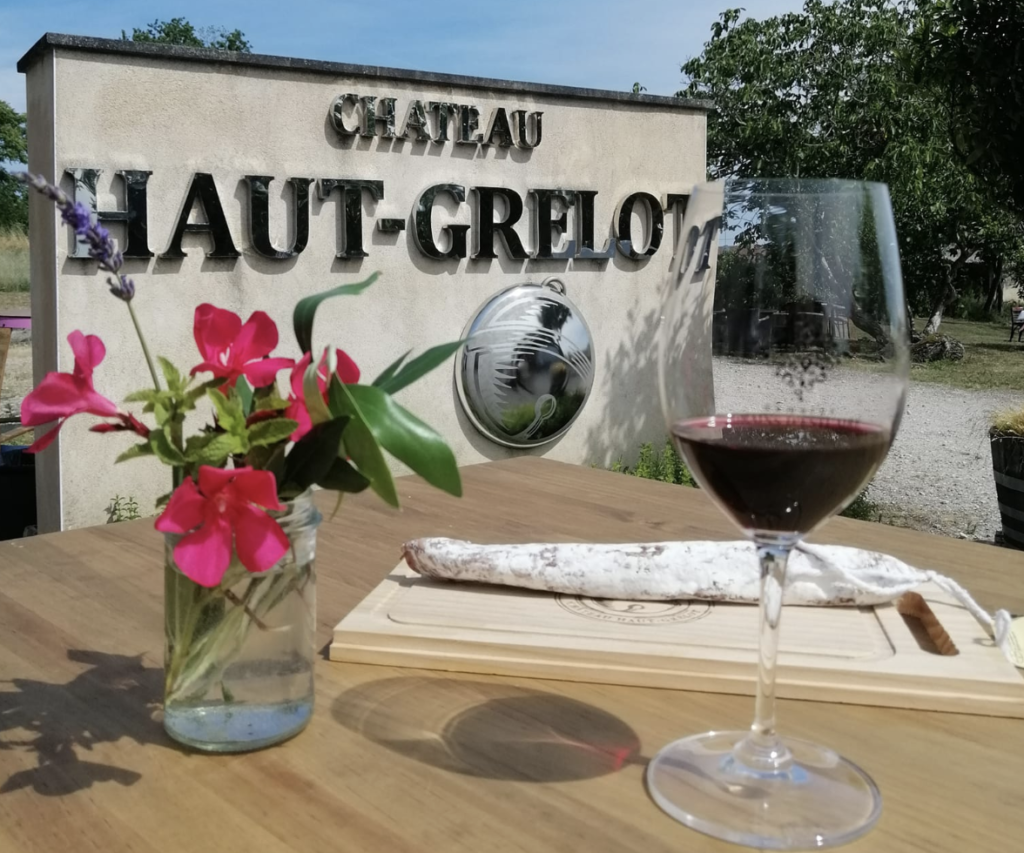
Chateau Haut Grelot
I don’t want to take over. But I like wine anyway. I went to business school. I went to New Zealand and England to learn the wine trade. It was a very nice experience.
Then I came back to the wine business and started again to make wine, to discover the wine business through the company. That was probably my first step. When you start taking a foot in the wine business, then you never go back.
Obviously, it’s a passion to grow and grow because making wine is like growing a child. You start from the vineyard and then you go to making wine and then to age the wine in barrels. Then you put it in a bottle just to show your wine to your customers.

Chateau Haut Grelot’s Julien Bonneau
Looking at your winery’s history. 1920, 1927 was a big year for your vineyard. 1975 was a big year for your father.
Can you tell us a little bit about the background of the vineyard? Up to the more modern technology your vineyard has pioneered.
I’m the fourth generation in my family’s wine business. So my grandfather used to have cows for breeding. Vineyards, asparagus, as well. So it was just a culture after the war.
My father started in 1978 and he focused on the wine business.
He wanted to make and grow quality wine. Very tasty wine. [His goal] changed a lot of things about the process of winemaking to develop very aromatic, long aging. So we started to make a range of wine: white wine, rosé, a bit sparkling as well.
He went to see the customer directly in the north of France, in Europe. He tried to sell directly and not through negociants. That’s the main story because in AOC Blaye which is north of Bordeaux on the right bank of the river, negociants were necessary through the distribution to sell the wine.
The big challenge was, ‘No. You don’t want to pay more for my wine, I’m going directly to the customer. I don’t want to go and to carry on sitting through a negotiation because you don’t trust me on quality wine and you don’t pay more for the wine. So we’ll stop sending to negociants. And go directly to the customer, private customers, wine shop, restaurant, wine importers.’
That was 1984 and 1985. It was a very different direction. It changed a lot compared to what happened in Bordeaux at that time. We started to control our distribution. From that time, he developed a lot of quality wine, he invested in new vineyards, bigger and bigger, and also buying some barrels and new equipment to make very good quality wine.
He loves saying ‘I was the first in 1990 to make green harvesting.’ Green harvesting is cutting some grapes in August. So one month earlier than the harvest to remove a bit of quantity and to make better quality. So he removed grapes in the vineyard to produce better concentration on the grapes left on the field.
That was his focus, it was an improvement in quality wine. From that time, we carried on. What I changed is, I make more wines, different wines, different quality wines. But still focusing on quality wine. I do more than 30 wines – different quality, colors, and winemaking process.
Let’s talk about your region, and how those elements inform the wines that you’re making?
Julien: We are located in AOC Blaye, north of Bordeaux, one hour driving up.
On the right bank of the river. So opposite to Saint-Estèphe, you have AOC Saint-Estèphe, you cross the river, the main river, and you are in AOC Blaye.
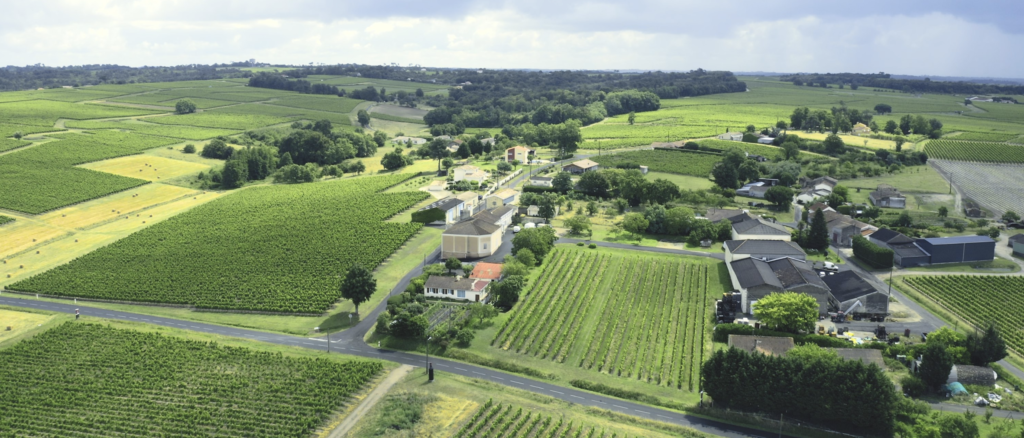
Where we are located we are mostly very gravelly. We have two types of terroir. For the red grapes Merlot, Cabernet Sauvignon, Cabernet Franc, Malbec.
Gravelly soil to help have early harvesting and early maturation for nice harvesting. The second is more on clay soil, for the Sauvignon Blanc for the Semillon and Muscadet to make more powerful wine. Two very distinguished terroirs.
The climate is very moderate, oceanic influence but also very warm during the summer. We are very hot right now. It’s a very hot summer so that’s helped a lot to have very ripe grapes.
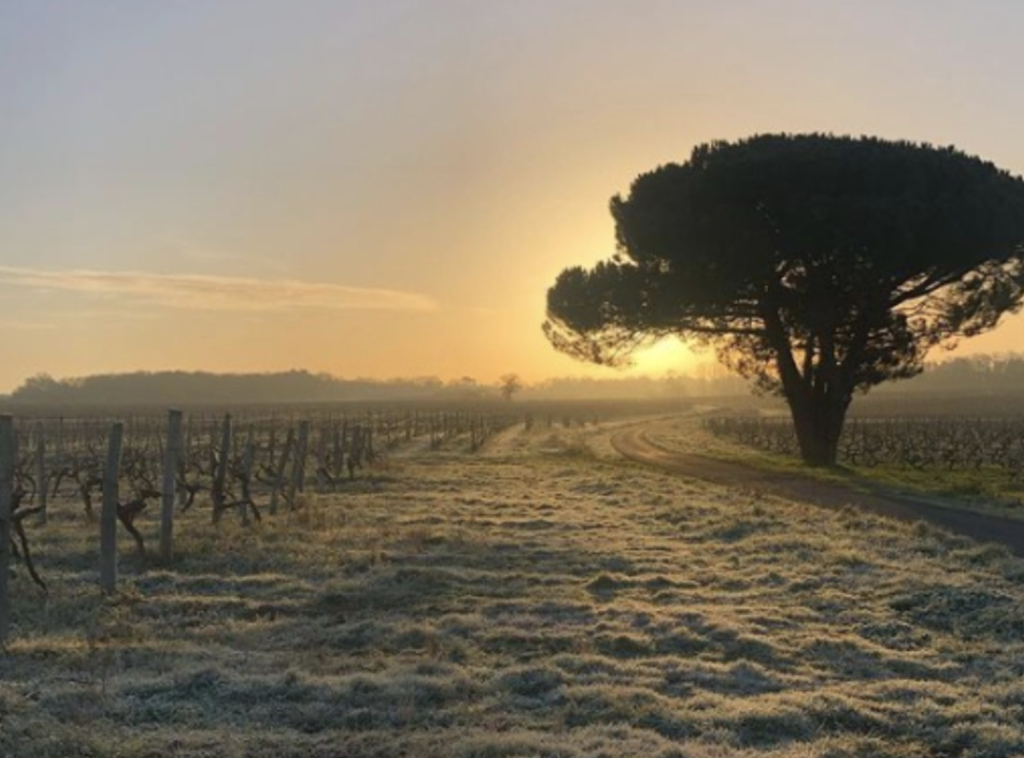
North of Bordeaux is quite hilly so it helps to have very nice exposure to the sun. For us, it’s very important to have ripe grapes. So we need to look for the sun and remove the leaves in front of the grapes. It helps to keep the freshness in the wine and still have very ripe grapes.
Let’s talk about your winemaking process.
AOC Bordeaux or AOC Blaye Côtes de Bordeaux, we have very strict rules. We need to have the vineyard on a hill. You need to respect 6,000 bottles per hectare of production.
Then we have nine months of winemaking before bottling it. So for us we make one year, even sometimes two years after, focusing more on quality wine.
AOC rules are just a basis. We try to make higher quality by aging and also to decrease the quantity of grapes per hectare to focus on sun contact for the grapes to have very ripe and very juicy grapes before harvesting. So we are very much challenging and controlling this aspect.
For example, in September, I walk every day, all my vineyards, just to check on the quality.
We try to get the aroma window. According to the evolution of the aroma on a grape, on a palate, we say ‘the window is there’, so we need to get it. It’s not only analysis from a laboratory, but it’s mostly from the palette. ‘How’s it taste?’
It’s the same as when you cook, you taste your sauce all the time.
Let’s talk about your wines. Can you talk us through some of the wines that you have?

Première Cuvée Red 2020, Blaye Côtes-de-Bordeaux
Première Cuvée Red 2020, Blaye Côtes-de-Bordeaux
Ruby red in the glass. Lovely nose with red berries, vanilla and spicy flavors. Very drinkable. Fruit forward with medium body. Well-balanced with long and aromatic finish

Château Haut Grelot Sauvignon Blanc Côtes de Blaye 2022
Château Haut Grelot Sauvignon Blanc Côtes de Blaye 2022
Classic Bordeaux blend: 90% Sauvignon Blanc, 5% Sémillon & 5% Muscadelle. Floral, crisp, elegant. Exotic fruit on the nose with grapefruit and wild herbs. Generous citrus on the palate. Full body, almost velvety with a decadent finish.
Perfect to pair with seafood, chicken, fresh salads and cheese boards.

Pin Franc Red 2020, Blaye Côtes-de-Bordeaux, red wine
Pin Franc Red 2020, Blaye Côtes-de-Bordeaux
Big gush of red fruit, red currant, raspberry, blueberry on the nose. Big body, well-balance. Very muscular with silky and structured tannins. A long finish.
Enjoy as an aperitif or pair with game, pigeon, lamb, turkey, or as a dessert with chocolate.
Chemin de l’Estuaire Red 2020, Blaye Côtes-de-Bordeaux

Chemin de l’Estuaire Red 2020, Blaye Côtes-de-Bordeaux
Powerful, bold, muscular. 100% cabernet sauvignon. A v ery special bottle, aged for 16 months in small oak barrels. A lush, velvety mouthfeel with medium tannin and a long, vanilla finish.

Boir Pour Voir 2020, Blaye Côtes-de-Bordeaux, Orange Wine
Boir Pour Voir 2020, Blaye Côtes-de-Bordeaux
100% Sauvignon Gris
On the nose, citrus and orange zest aromas. Light body, light tannin. A tart bitterness on the palette with medium finish. Enjoy as an aperitif, or pairs with hard cheeses and desserts.
Julien: We have a wide range of wine. But I’m going to start with…
[Première Cuvée Red 2020, Blaye Côtes-de-Bordeaux, red wine]
Which is very fruity wine. This one is more classic Bordeaux style.
For the white is [Château Haut Grelot Sauvignon Blanc Côtes de Blaye 2022].
For 90% and very fruity, juicy, very aromatic fruit, grapefruit, and also passion fruit and it’s very easy drinking very easy drinking, very crisp.
The red is 70% of Merlot, 30% of Cabernet sauvignon. Wine aging on the lees a bit just to bring a bit of fatness. Strawberry character.
Both wines are very drinkable. Don’t need to age too much. Lovely with sushi, seafood, tuna, all fish. It works pretty well with meat. So that’s my two first classic range of Bordeaux style.
Then I have Parfum, which is 100% Malbec. [Chemin de l’Estuaire Red 2020, Blaye Côtes-de-Bordeaux]. Fruity, easy drinking, not too heavy as Argentina wines or Malbec wine. It’s more of a freshness and very licorice character.
The Cabernet Sauvignon is aged in barrels for one year, very select grapes.
We make a very good balance between the fruit from the Cabernet and the barrels. From aging typical from wine. That’s two different wines which is this one a bit more on the liquorized fruit freshness side, and this one is very elegant.
Lastly is orange wine. Bois Pauvoir, which is a sauvignon grape. [Boir Pour Voir 2020, Blaye Côtes-de-Bordeaux]
The story of this wine was Bois Pauvoir. It’s orange wine. I never made it before, but I wanted to make a wine which says let’s try to see how it’s going. And that means in French, “let’s try, you will see.”
Going back to cooking, what are some of your favorite things to eat with these bottles?
Julien: I’ll say for Sauvignon Blanc, this one is lovely with tuna. Rare tuna. Even tataki tuna. It has a very fresh character, very nice acidity and it’s very well matched with tuna.
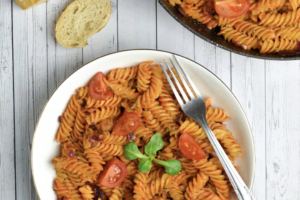
This is one who can match pretty much with many things, but if you like pasta with tomato. Easy drinking freshness. Very drinkable. Not too heavy and you have acidity in a tomato with pasta and that keeps your freshness.
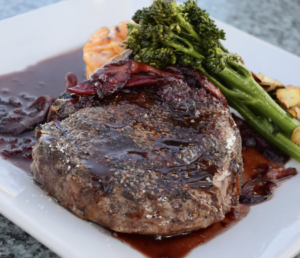
It pairs well with game. I like pigeon with a side of onions. Even lamb is very nice. It works pretty well with white meat. You can say beef as well. Roasted beef on a barbecue with carrots and peppers.
That’s very long, which is very a bit unusual, but it’s lovely with cheese. Even with fish in tomato sauce. Sea bass or grilled octopus. Yeah, it could be a very nice match.
How can we find more about you and your wines?
It would be fantastic to go on Instagram and follow us and follow our story about how we try to develop in the U.S. You can also visit our website to learn more.
Post Views: 390 -
French Bloom Delivers Flavor and Elegance to DC without Boozy Battles – Wine Review
French Bloom Delivers Flavor and Elegance to DC without Boozy Battles
You want to celebrate. You want to “pop the cork”, enjoy the flavor, but you don’t want the after-effects. The drunkenness. Certainly not the hangover. And women? Of course there needs to be ways to elegantly celebrate even (and especially) during pregnancy. Imagine a pregnant-friendly wine?
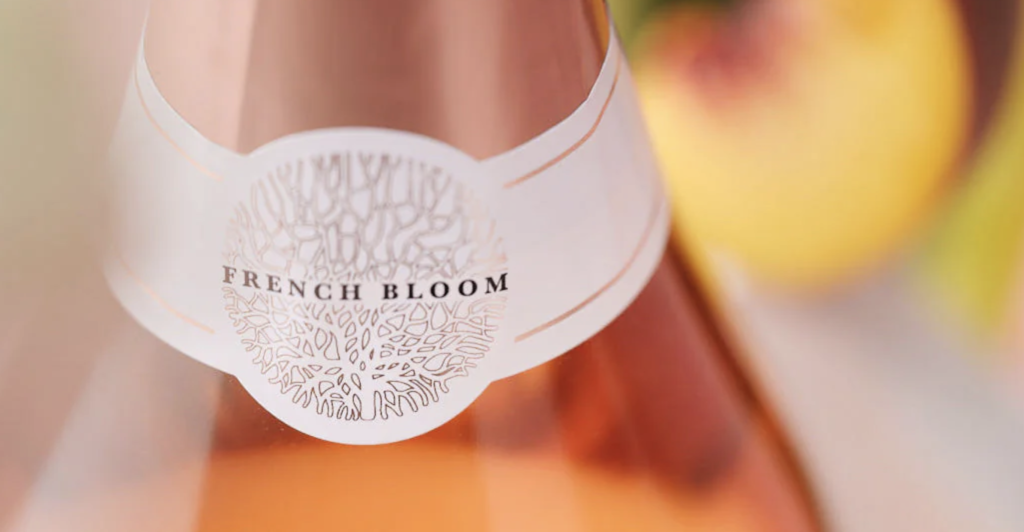
It’s a situation that should have been solved already. But now it has and with style. It’s a subtle, elegant, flavorful answer.
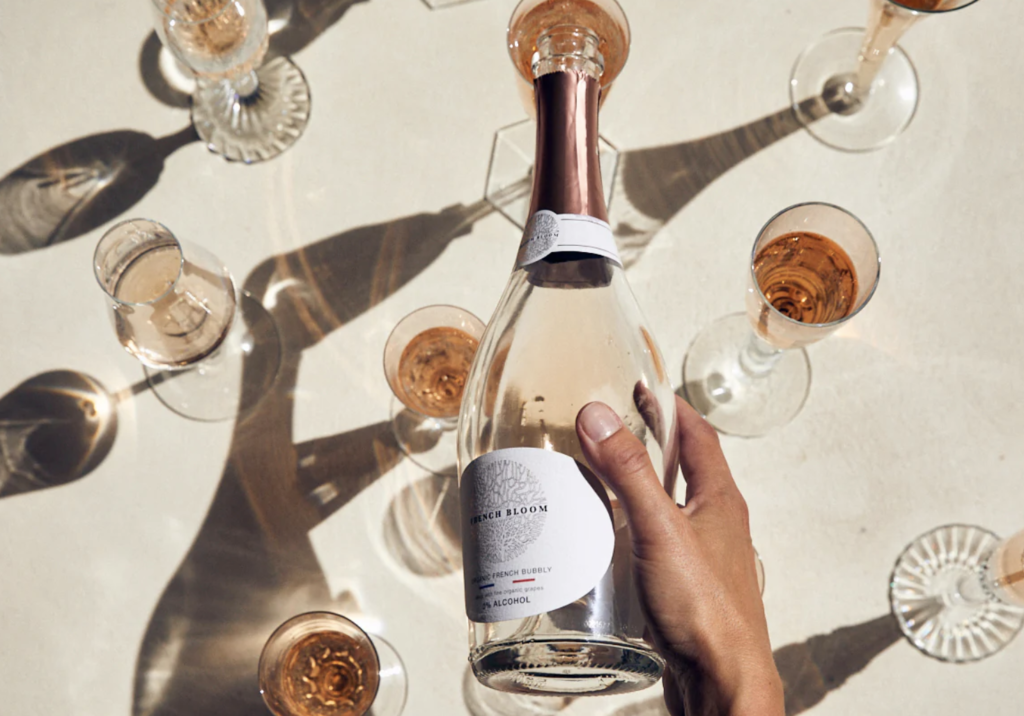
French Bloom Re-Invents the Game
Now everyone can share “moments of pleasure” as their website mentions. French Bloom’s organic de-alcoholized chardonnay and pinot noir, alcohol-free French sparkling cuvées combine French tradition with innovation.

French Bloom Co-Founders Maggie Frerejean – Taittinger and Constance Jablonski
The Team Behind French Bloom
Maggie Frerejean – Taittinger and Constance Jablonski bring different and complementary skill sets. Equally important, they bring the desire for the vision and the motivation for innovation.
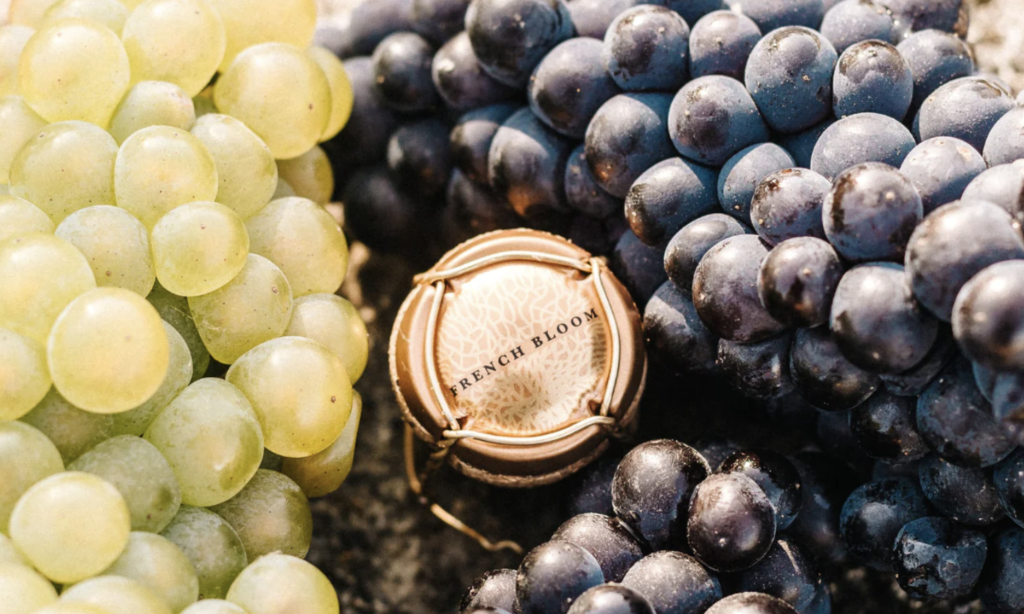
Through their innovative and female-founded brand, French Bloom gives an alternative and inviting drink to those wanting to celebrate elegantly and differently, making the most of the precious moments shared with friends and family.
If the names sound familiar, Constance is a globally-working fashion model you’ve seen representing Estée Lauder and countless luxury brands.
Maggie is director of the Michelin Guide and married to Rodolphe Frerejean-Taittinger, chief executive of Champagne Frerejean Freres.
Carl Héline, the former head of Champagne Krug, joined French Bloom.
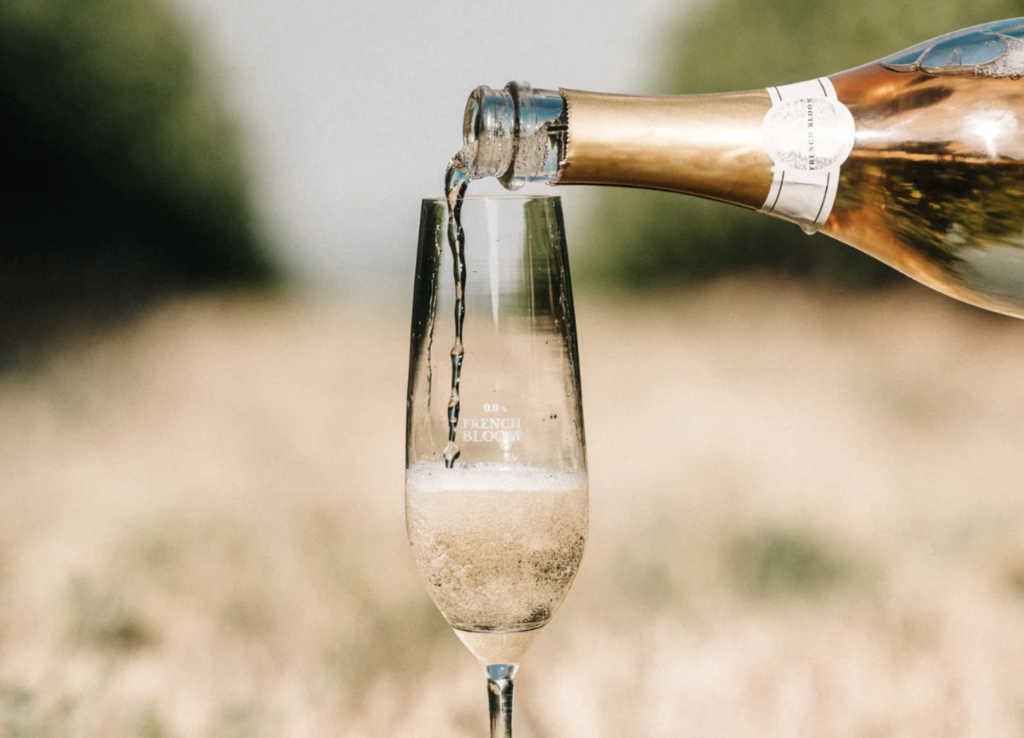
Let’s Taste French Bloom
Le Rosé
Pale pink in the glass. Rose petals, freshly picked red currant, raspberry aromas on the nose. Indulgent white peach notes on the palate. Elegant. The organic French grapes give a nice acidity. Well-balanced complexity of minerality and freshness. Tartness and a rounded balance on the finish.
Certified Vegan- Organic- Halal
0.0% Alcohol
Pregnant-friendly
Low Calorie
Sulfite-Free
No preservatives
No sugar added, 4,2g/ 100mlA blend of de-alcoholized organic French Chardonnay and Pinot Noir wines, organic grape juice, Gensac spring water and natural organic flavors such as lemon.
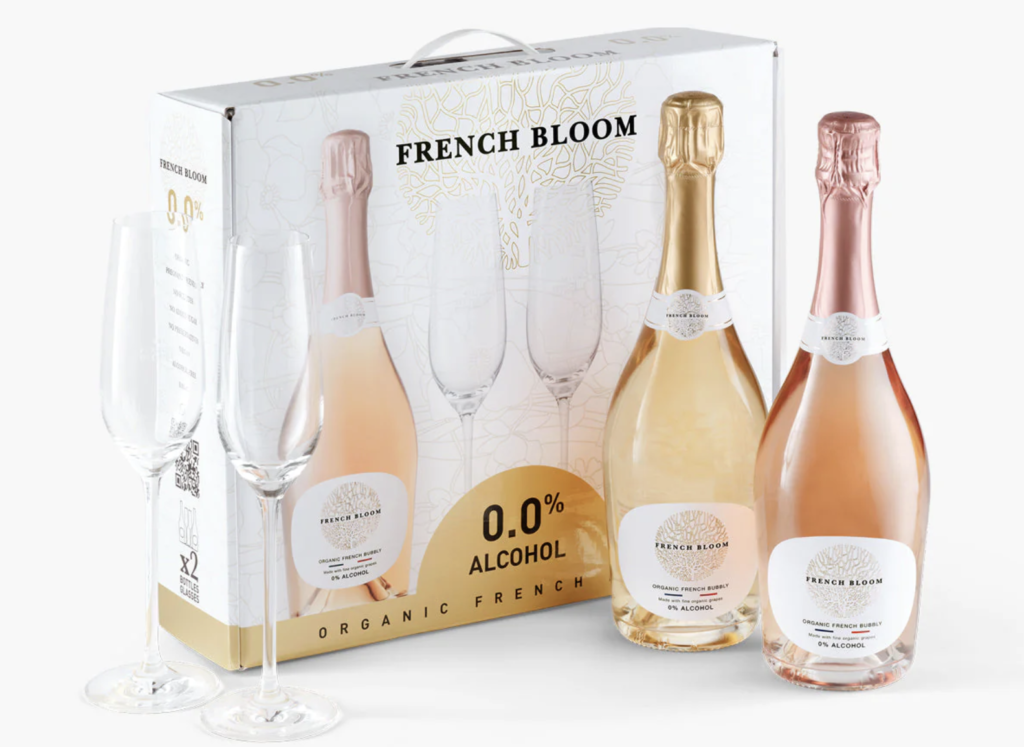
Le Blanc
Organic French Bubbly, 0.0% Alcohol
Medium golden amber in the glass. Minerality and pear aromas on the nose, that just keep opening and opening. Pear, banana, melon, white flowers. An explosion of complexity on the palate. As the flavors open, Granny Smith apple, spicy citrus. A full-bodied mouth with a luxurious, zesty finish that keeps going.
De-alcoholized organic wine, organic grape juice, French sparkling Gensac spring water, organic lemon juice, organic natural flavors.
Certified Vegan- Organic- Halal
0.0% Alcohol
Pregnant-friendly
Low Calorie
Sulfite-Free
No preservatives
No sugar added, 5,9g/ 100ml
Learn more: FrenchBloom.com
https://www.facebook.com/frenchbloomsparkling
https://www.instagram.com/french.bloom
Post Views: 6,846 -
Zayn Malik launches Lychee Martini flavor, joins Mixoloshe as Chief Creative Officer and Co-Owner
Zayn Malik joins Mixoloshe as Chief Creative Officer and Co-Owner
The global superstar launches a custom Lychee Martini flavor, with a unique can design inspired by his own tattoos.
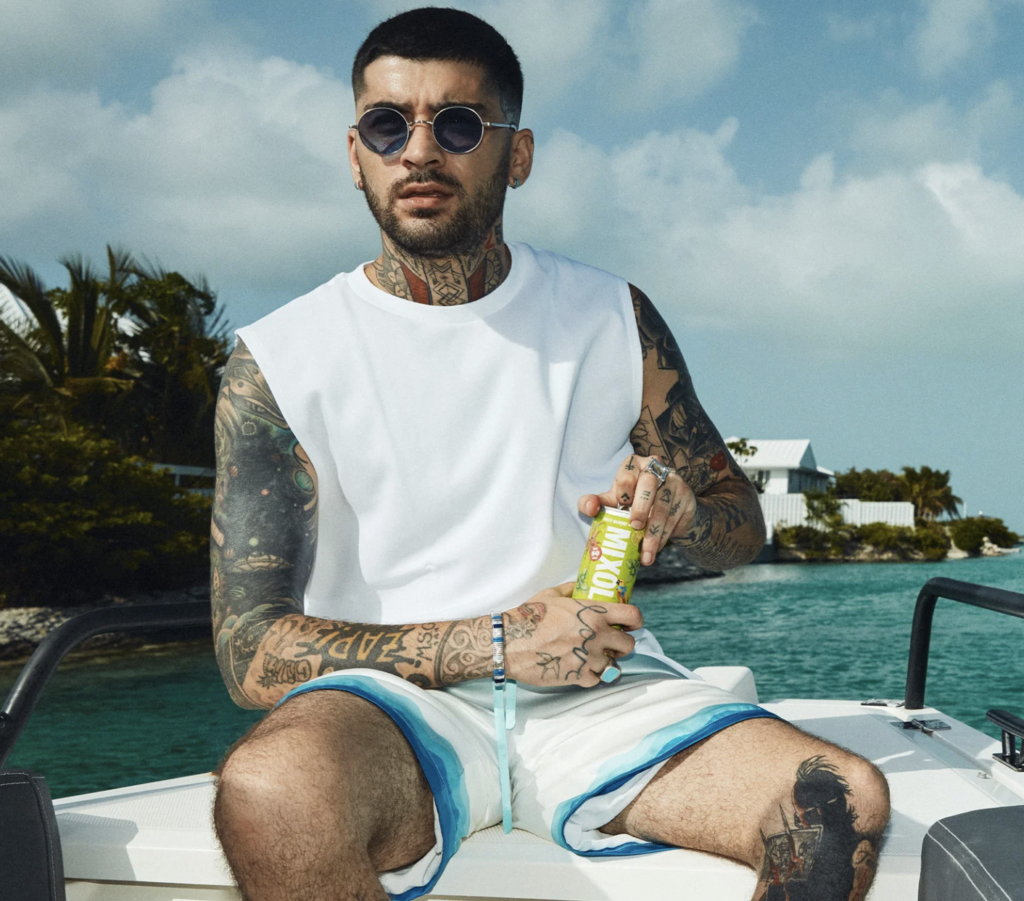
The fast-rising, award winning non alcoholic beverage brand, made with clean ingredients and nothing artificial will make its retail debut at Walmart, launching across the US with the retailer by end of October
Mixoloshe, a female founded and award winning non-alcoholic beverage brand, announces its partnership with celebrated award-winning artist and entrepreneur Zayn Malik, who has joined the company as the Chief Creative Officer (CCO) and Co-Owner.
The partnership will center around reshaping the narrative of the non-alcoholic beverage industry, as well as deep creative collaboration on marketing initiatives and upcoming flavor launches.
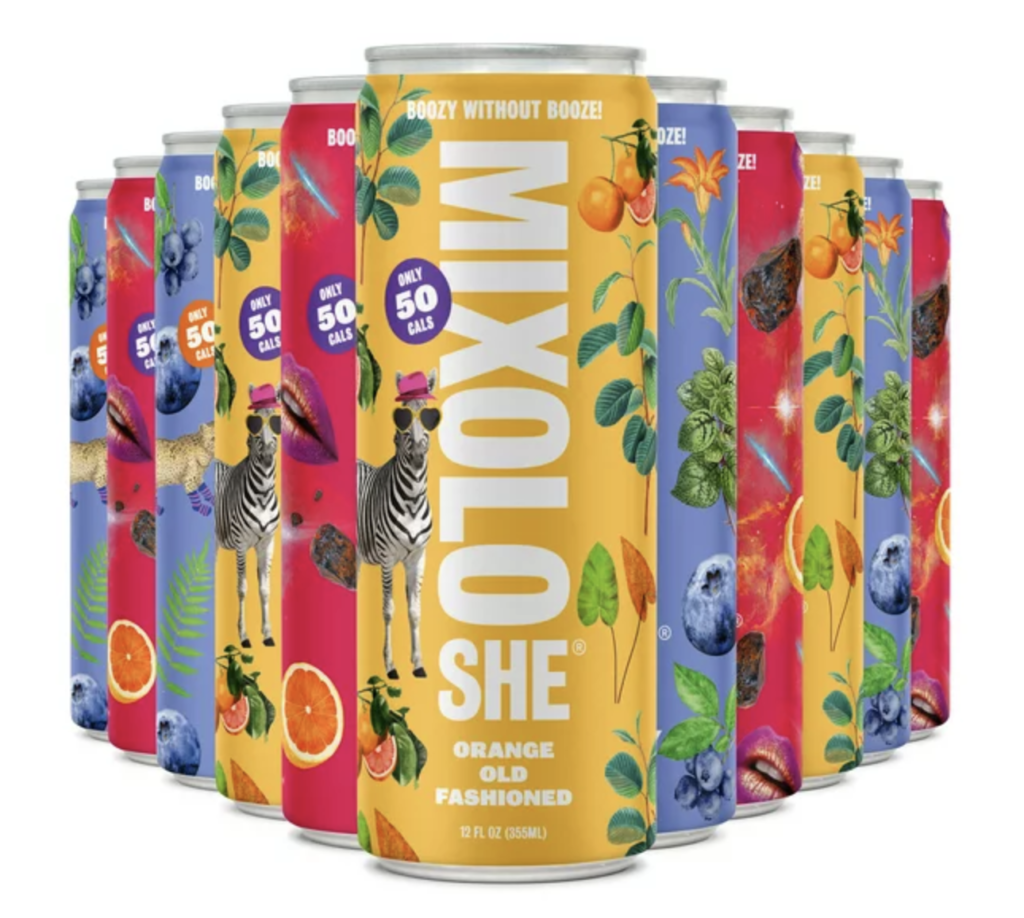
Additionally, Mixoloshe will launch in 500 Walmart stores across the country, marking the brand’s anticipated retail debut.
Zayn’s first flavor launch is a non-alcoholic Lychee Martini, a refreshing and exotic drink, that is sweet, floral, and slightly tropical. The can design is also captivating and unique, featuring replica illustrations of his own most beloved tattoos.
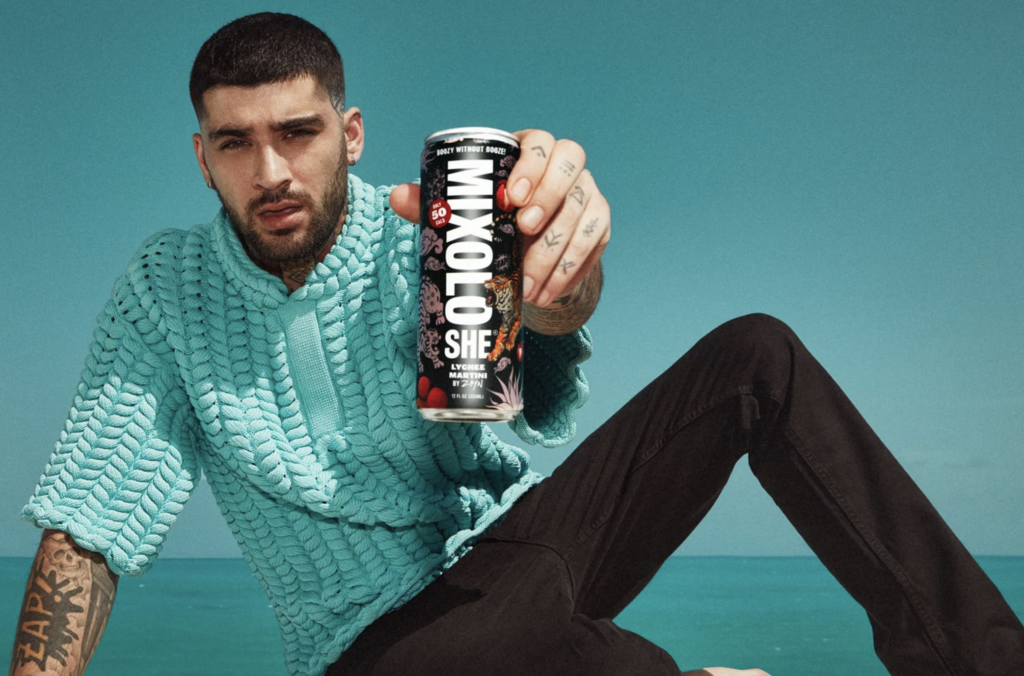
Mixoloshe was founded in 2022 to redefine the booming non-alcoholic drink category with a clean, alcohol-free take on cocktails and premium spirits that taste like the real thing.
Their collection offers a non-alcoholic range of popular cocktails, such as a Mojito, Old Fashioned, Gin & Tonic, and Margarita, as well as non-alcoholic Tequila, Whisky, and Gin, all made with real ingredients, and low in sugar, calories.
Mixoloshe’s soft seltzers and non-alcoholic spirits have been recognized globally as best in class, and in 2023 they were honored with the Bartenders Spirits Gold Award, Ascot Award Gold for Taste, and the SIP Awards in Gold, Silver, and Bronze, to name a few. Their collection includes 8 canned non-alcoholic cocktail varieties, including the newly launched Lychee Martini flavor, and three bottled non alcoholic premium spirits.
“The non-alcoholic beverage market is ready for disruption, which can create immense growth potential. We see consumers already shifting preferences towards healthier and alcohol-free alternatives, which provides an opportunity for a brand like MIXOLOSHE to redefine this industry. I could not be more excited about the chance to make some noise in the category of non-alcoholic beverages and build one of the most talked about drinks in the world.” – Zayn Malik
“Zayn is a creative visionary both in music and beyond. His passion for innovation and his ability to captivate audiences will undoubtedly help us redefine the narrative around the non alcoholic beverage category, with a fresh perspective on making healthy lifestyle choices and living well, irrespective of your beverage preferences,” said Kristina Roth, MIXOLOSHE Founder and CEO. “I’m looking forward to working alongside him and shaping a future for this category where the glass is always half full of possibilities.”
Soft seltzers are available in a 12 pack, and retail for $29.99. Non-alcoholic spirits are available in a 750 ml bottle and retail for $29.99.
For more information, please visit: mixoloshe.com.
Mixoloshe is a female-founded line of non-alcoholic seltzers and spirits that are formulated to taste and smell boozy without the booze. Whether you’re booze-free forever or just for the night, these drinks are the perfect inclusive answer to an age old question—what are we drinking? High in flavor and low in calories, MIXOLOSHE packs a party into every can of soft seltzer and bottle of non-alcoholic spirits. With a mission and ingredients that are anything but fake, the brand offers booze-free cocktail alternatives that taste like the real thing. Party tonight with no regrets tomorrow.
Post Views: 2,079





